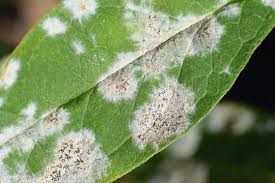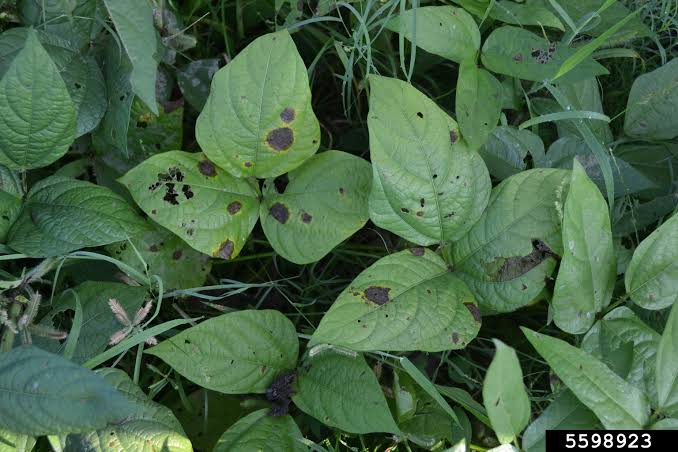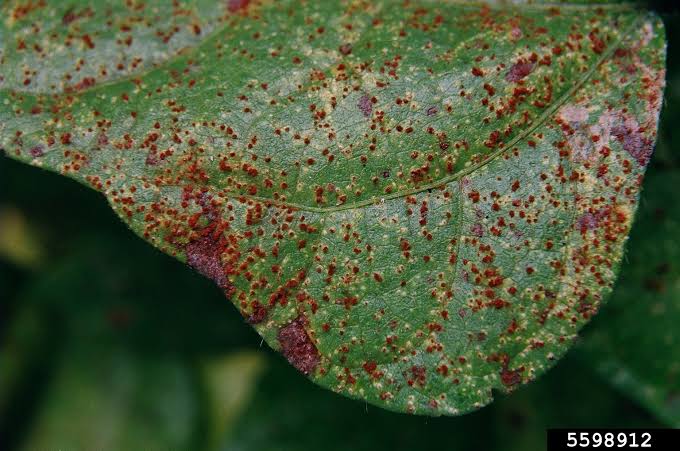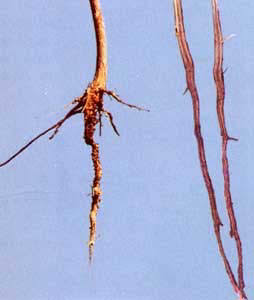

Menu
⮞ About
About...
Black gram can be grown on variety of soils ranging from sandy soils to heavy cotton soils. The most ideal soil is a well drained loam with pH of 6.5 to 7.8. Black gram cannot be grown on alkaline and saline soils. Land is prepared like any other kharif season pulse crop. However during summer it requires a thorough preparation to give a pulverized free from stubbles and weeds completely.The pulse crops in Rabi and Pre rabi seasons are mostly grown on residual soil moisture condition. However irrigation should be provided at critical growth stage i.e flowering and pod development stage.
diseases & its fertilizer

Powdery mildew spores symptoms:
White powdery patches appear on leaves and other green parts which later become dull coloured
These patches gradually increase in size and become circular covering the lower surface also
When the infection is severe, both the surfaces of the leaves are completely covered by whitish powdery growth
In severe infections, foliage becomes yellow causing premature defoliation
The disease also creates forced maturity of the infected plants which results in heavy yield losses.
Powdery mildew spores solution:
⮞ Combine one tablespoon baking soda and one-half teaspoon of liquid, non-detergent soap with one gallon of water, and spray the mixture liberally on the plants. Mouthwash. The mouthwash you may use on a daily basis for killing the germs in your mouth can also be effective at killing powdery mildew spores

Black Leaf spot Symptoms:
Black spot (blackspot) is the most important fungal disease of roses worldwide. The initial symptoms start as feathery-edged, black spots on lower leaves. As these spots enlarge, the leaves turn yellow and drop off. The disease continues up the stems until the entire plant becomes defoliated.
Black Leaf spot Solution:
⮞ Mix neem oil with water (1:10 ratio) and spray it on black gram leaves affected by leaf spot; neem oil has natural antifungal properties. Ensure thorough coverage, and repeat the application every 7-10 days for effective control.

Black gram rust Symptom:
The disease appears as circular reddish brown pustules which appear more commonly on the underside of the leaves
When leaves are severely infected, both the surfaces are fully covered by rust pustules
Shrivelling followed by defoliation resulting in yield losses.
Black gram rust Solution:
⮞ Dilute pure neem oil with water at a ratio of 1:10 (1 part neem oil to 10 parts water).ensure proper mixing to create a homogenous neem oil solution. Apply the neem oil solution during the early stages of black gram rust disease or as a preventive measure. Spray the solution evenly on both sides of the black gram leaves, covering affected and neighboring areas. Administer the neem oil treatment regularly, ideally every 7-10 days, to disrupt the rust fungi's life cycle. Neem oil is eco-friendly and poses minimal risk to beneficial insects, making it a sustainable choice. Neem oil not only combats rust but also enhances the overall immunity and health of black gram plants. Apply neem oil during cooler parts of the day to prevent evaporation and maximize absorption.

Black root rot symptom:
Black root rot is also called Thielaviopsis root rot. Plants are stunted and grow poorly. Infected roots may initially have small dark brown to black bands where infection has taken place. As the disease progresses, roots can become badly rotted. Stems below ground may enlarge and develop black, rough, longitudinal cracks. Characteristic dark brown to black, thick-walled, barrel-shaped chlamydospores form in infected tissues and may be visible under magnification
Black root rot Solution:
⮞Neem-based products, such as neem cake or neem oil, have antifungal properties and can be applied to the soil. Neem helps control soil-borne pathogens.some organic farmers use biodynamic preparations, such as BD 504 (Yarrow) and BD 508 (Horsetail), which are believed to enhance the plant's natural resistance to diseases. Planting certain crops as companions can help repel or suppress soil-borne pathogens. For example, marigolds are known for their ability to deter nematodes and some soil-borne diseases. Avoid overwatering, as excessive moisture can create favorable conditions for the development of root rot. Use drip irrigation or water at the base of plants to minimize soil splashing.Apply organic mulch around the base of black gram plants. Mulch helps regulate soil temperature, conserve moisture, and prevent soil-borne pathogens from splashing onto plant roots. Use vermicompost, which is rich in beneficial microorganisms, to enhance soil health and suppress the growth of root rot pathogens.Follow good agricultural practices, including proper spacing of plants, avoiding overcrowding, and maintaining overall plant health.